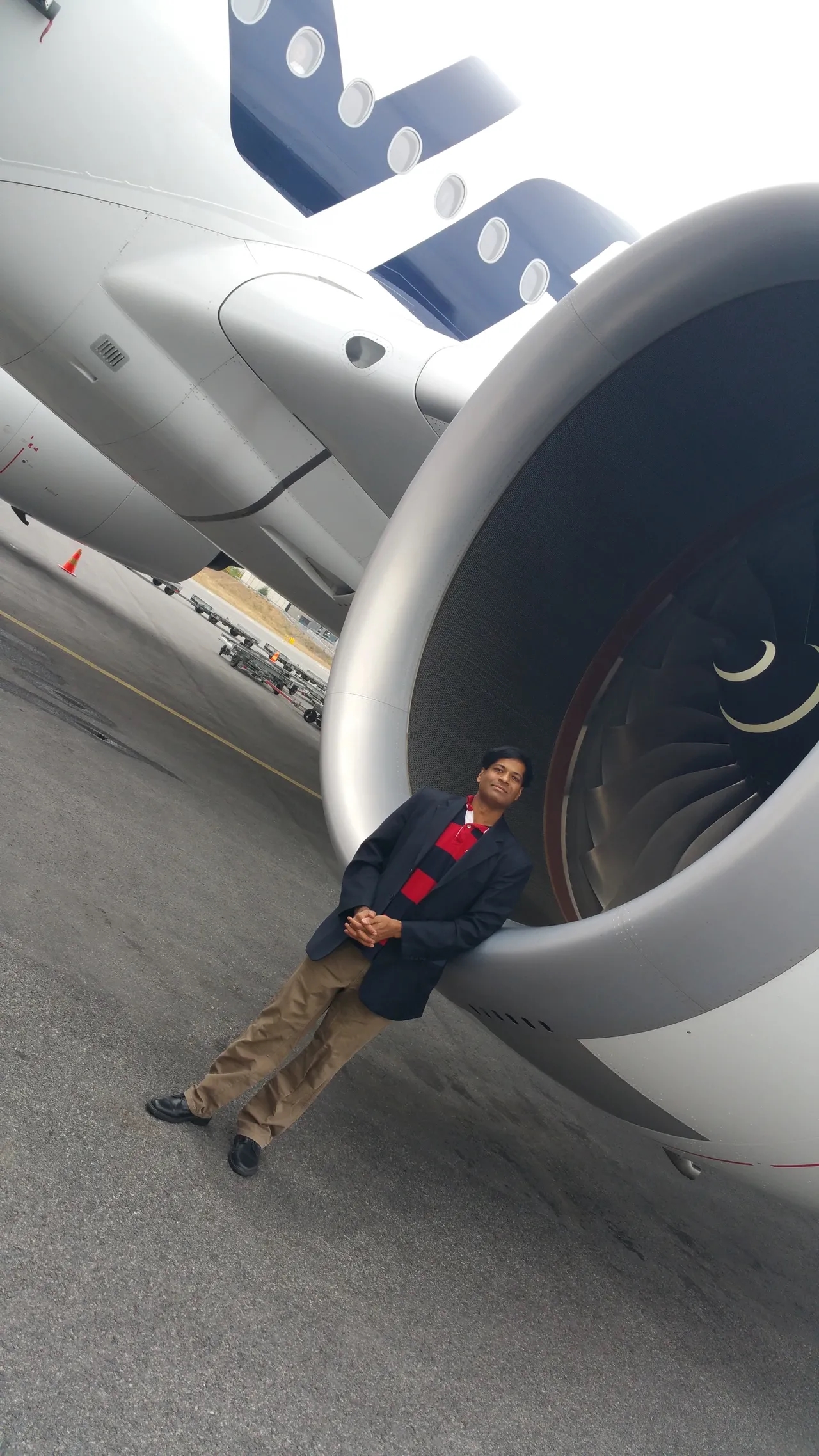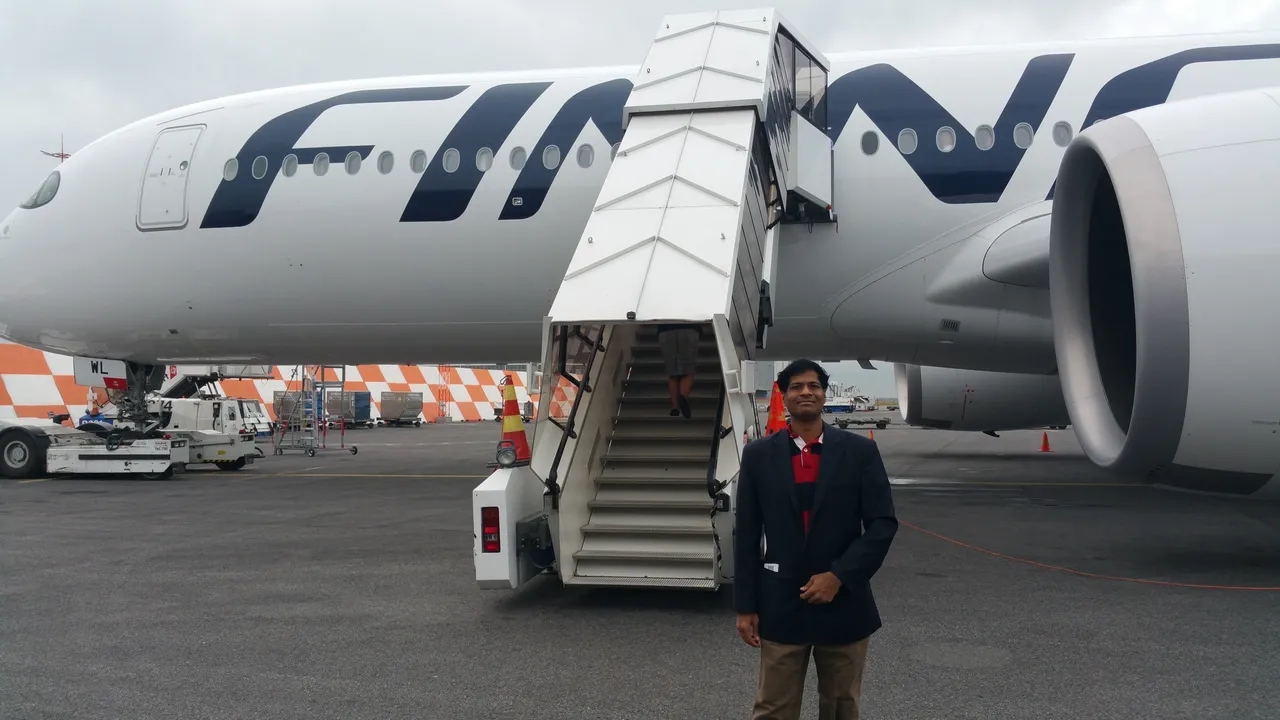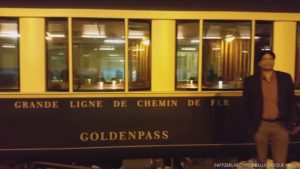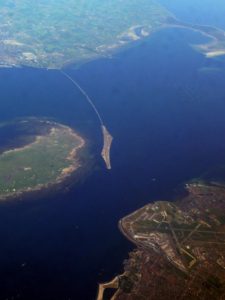
Being a extreme fan of Planes, Trains and Cruises and having closely following the A380, A350, A320 & A321 neo programs of AIRBUS and B787 dreamliner program of BOEING since long. So I was always keen to do be on these ultimate man made wonders as they rolled out or on trails or world tours or inauguaral launaches or Air shows. Also, having worked with clients very closely in the Airline, Airports, Shipping Industries and understand the Air & Sea Transport very closely

Just compare how tiny Im (1.8m versus 3m diameter turbofan) .Observe the giant Rolls-Royce Trent XWB engine under an A350 wing which is the giant 300cm fan disk

I like these planes so much that over the years – in addition to many flights across the world – I studied and understood the many features of these aircrafts as I could gather from multiple sources like air shows, websites, talks of technical personnel and many others / so many of these details below are always subject to change as they evolve and new changes and technologies emerge in future.It is that I did not become a Flight Captain or Ship Captain or a Train Driver !
Who are the AIRBUS A350 launch operators ? When ?
Airbus A350 launch operators :
- Qatar Airways (Globally & Asia) with the inaugural flight in 2015
- Finnair in Europe with the inaugural flight in 2015
- Finnair operates Airbus A350 at very high Flight Hours Per Day (FHPD)
- FHPD : Beijing (15 FHPD), Shanghai (18 FHPD), Bangkok (20 FHPD)
Airbus A350 currently flies the world´s longest non-stop Singapore (SIN) – Newark (EWR) route. Describe the flight in detail
- A350 : Currently the WORLDs LONGEST FLIGHT (as on June 2019)
- A350 ULR is operated on currently the worlds longest flight covering
- 16,562 km (8,943 nmi) for a 15,353 km (8,290 nmi) orthodromic distance
- In around 18 hours by Singapore Airlines between Singapore & Newark
- This has 161 seats (67 business/132 degree recline,94 premium economy)
- Commanded by 2 teams (Captain and first officer, that share the flying)
- The first team handles take off, then rests for up to five hours while the second team flies the plane. Then they change again for three hours with one team flying and the other sleeping.The original captain then lands the plane
- The next duty for the pilots is 72 hours after a good rest & relaxation
- 13 cabin crew entitled to five hours rest in chunks agreed among them
- The cabin crew have bunk beds up in roof space at the back of plane
How is it possible to operate such long flights with twin engine planes like A350 ?
- With A350 / it is possible to operate 20 hour flights because of modifying the existing fuel system so they can carry an additional 24,000 litres of fuel and use about 25% less fuel than the 777s did for similar distances.
- A350 : ETOPS 370 / can fly more than 6 hours with a single engine !
- A350 is the first aircraft to be approved for ETOPS beyond 180 minutes
- EASA approves the A350-900 for ETOPS 370 (aim to go upto 420)
- This allows A350 to fly more than six hours on one engine
- This also helps A350 to cover 99.7% of the Earth’s surface
- Airbus A350 – Airbus A350 XWB is a family of jet airliners that are
- Long-range (longest is A350 ULR between Singapore Newark 16562 KM)
Describe Airbus A350 Salient features
- Twin-engine jet : powered by 2 engines > fuel efficiency, redundancy , safety
- Wide-body twin-aisle >5m wide,>7 seats,usually >200 passengers
- Airbus A350 : Key features (will be vary owing to customization)
- A350 is positioned to Succeed A340 & compete with Boeing B777 & B787
- A350 Production : 10 new factories in Europe & US, 3 factories extended
- A350 Engines : Trent XWB from Rolls Royce with 300CM Disk Diameter
- A350 Testing using 5 prototypes / 12 months-reaches mach0.8 @ 25000 ft
- A350 Testing : multiple climatic & humidity tests from +45 °C to -40 °C @ the unique McKinley Climatic Laboratory at Eglin Air Force Base, Florida
- A350 : more headroom, larger overhead storage space, wider windows
- A350 nose : forward-mounted nosegear bay improves aerodynamics
- A350 nose : enables overhead crew rest area forward no encroachment
- A350 windscreen : improves vision by reducing the width of centre post
- A350 undercarriage : Has 4 wheels bogies (-900)/6 wheel bogies (-1000)
- A350 cockpit : 6 LCDs, IMA managing upto 40 functions vs 23 for A380
- A350 cockpit : reduced maintenance, lower weight
- 50% fewer standard computer modules called line-replaceable modules
- A350 Cockpit : Fly By Wire (FBW) – 100MBPS / AFDX standard
- A350 Overall length : 66.8 m (A350-900) or 73.79 m (A350-1000)
- A350 Wing : 64.75m with wing tips (Code E),made@Brighton wales, UK
- A350 cockpit : 6 LCDs, IMA managing upto 40 functions (A380-23)
- A350 Cruise speed : Mach 0.85 (903 km/h) or Mach 0.89 (950 km/h)
- Maximum Range : 15000 km (A350-900) or 16100 km (A350-1000)
- Maximum Take Off Weight (MTOW) : 316 t (A350-1000) and varies
- Service ceiling : 13100 m and varies
- A350 Air Management System adapts cabin airflow to passenger load
- Draught-free air circulation > Better cabin atomosphere
- Maximum thrust : The 430Kn higher thrust version for the A350-1000 that runs faster and at increased temperatures allowed by composite materials and with hot & high options for customers dealing with high temperatures & altitudes
How is the A350 lower noise level achieved ?
A350 lower noise :
- Reduced Acoustic Mode Scattering Engine duct System (RAMSES)
- An acoustic quieting engine nacelle intake, and
- A carry-on design of the Airbus’s “zero splice” intake liner
Describe the A350 full bleed system ?
A350 full bleed system
- Bleed air is compressed air taken from the compressor stage of a gas turbine upstream of its fuel-burning sections
- Bleed air is valuable in an aircraft for two properties
- High temperature and high pressure (typical values are 200–250 °C and 275 kPa (40 PSI), for regulated bleed air exiting the engine pylon for use throughout the aircraft
- Bleed air is used because it is easily available, reliable and potent source of power
- Bleed air from that system can be utilized for
- Internal cooling of the engine
- Cross-starting another engine : start the remaining engines
- Engine and air-frame anti-icing : heat intakes,keep critical parts icefree
- Cabin pressurization : supplying air>provide pressure for aircraft cabin
- Pneumatic actuators, Air-driven motors,pressurizing hydraulic reservoir
- Waste and lavatory water storage tanks : pressurized by bleed air
- Bleed air used for air-conditioning and pressurization can be contaminated by chemicals such as oil or hydraulic fluid known as a fume event but this is rare
- While those chemicals can be irritating, such rare events have not been established to cause long term harm
Describe the A350 innovative composite materials ?
A350 materials (these can always change in future with new developments)
- (1) 53 % Composites (Boeing 787 : 50 %)
- First Airbus aircraft with 53 % composites and both fuselage & wing structures made primarily of carbon fibre reinforced polymer.
- Carbon fibre reinforced plastic for the
- Outer and centre wing box (covers, stringers, spars)
- Fuselage (skin, frame, keel beam, and rear fuselage) and
- The empennage (horizontal & vertical tailplanes)
- (2) 19 % Aluminium,AL/Li alloy (Boeing:20%) for ribs, floor beams,gear bays
- (3) 14 % Titanium for landing gears, pylons & attachments (Boeing 787:15%)
- (4) 6 % Steel (Boeing 787 : 10 %)
- (5) 8 % miscellaneous (Boeing 787 : 5 %)
Who are the A350 key suppliers for key item components ?
A350 : Key item components in the A350 & the current key suppliers
- Avionics & navigation equipment for the A350 XWB : Thales Group
- The horizontal stabiliser actuator : Rockwell Collins
- Primary flight control actuation : Moog Inc.
- Development of an interior concept for the original A350 : BMW
- In-Flight Entertainment & Communication (IFEC) : Panasonic Avionics
- Undercarriage for the A350-900 variant : Messier-Dowty (Safran)
- Undercarriage for the A350−1000 variant : UTC Aerospace Systems
- Engine thrust-reversers and nacelles : UTC Aerospace Systems
- The nose gear : Liebherr Aerospace
- Auxiliary power unit (APU) : Honeywell (1,268 kW) HGT1700)
- Air management system (The bleed air, environmental control, cabin pressure control and supplemental cooling systems) : Honeywell
- Complete fuel package : inerting system, fuel measurement & management systems, mechanical equipment and fuel pumps : Parker Hannifin
- The ram air turbine (100 kilovolt-ampere) : Hamilton Sundstrand

